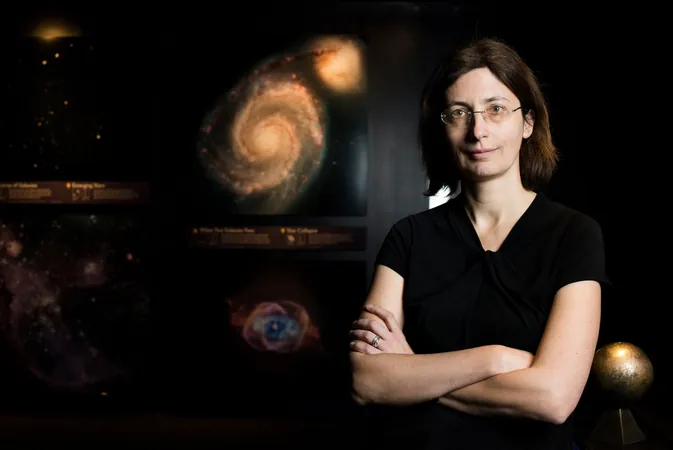
Unlocking the Mysteries of the Ancient Universe: What Space Dust Reveals
2025-06-06
Author: Wei Ling
Astronomers Face a Dusty Challenge
Astronomers often find themselves peering through a cosmic fog when investigating galaxies formed billions of years ago. This dust can obscure their view, making it tough to study distant celestial objects, especially those that formed around five billion years ago.
A Breakthrough with the James Webb Space Telescope
A team of researchers, led by Anna Sajina from Tufts University, has made significant strides using the James Webb Space Telescope (JWST). They've discovered that the ice-covered dust in a distant galaxy closely resembles the dust in our Milky Way, enabling more precise calculations for understanding star and black hole formation in the early universe.
Understanding the Universe's Dust Problem
The universe is believed to have originated approximately 14 billion years ago, making the study of its early stages quite challenging. Sajina specializes in dissecting dust-obscured systems, focusing on how to adjust for the effects of this pesky dust that absorbs starlight and re-emits it as infrared radiation, often invisible to us. She explains, 'To correct for that, you need to make assumptions about the properties of the dust.'
A First Look at Interstellar Ice
For years, astronomers have operated under the assumption that dust in distant galaxies behaves like that in our local vicinity. However, Sajina's new findings challenge this assumption by showing that the composition of distant dust is surprisingly similar to what we observe nearby. This could mean planets forming in those ancient galaxies had similar building blocks as those in our own.
Exploring a Galaxy 5 Billion Light Years Away
The research team focused on a galaxy dubbed SSTXFLS J172458.3+591545, located about five billion light years away. The JWST's advanced technology allowed them to detect solid ice forms, including carbon dioxide, carbon monoxide, and water— a groundbreaking achievement.
Pushing Boundaries in Cosmic Discovery
Sajina remarked on the significance of this discovery, stating, 'We've detected complex molecules in space before, but this is the first time we've observed solid ice mantles on dust grains.' This marks a pivotal moment in astronomy, pushing the boundaries of our understanding of chemistry in the early universe.
The Implications of Ice-Covered Dust
The analysis revealed that the composition of ice-covered dust in this ancient galaxy mirrors that found in our nearby celestial neighborhood. As Sajina notes, 'If planets are forming in these distant galaxies, they would have the same raw materials to start with.' This insight not only enhances our understanding of star and planet formation but also sheds light on the structure of ancient galactic systems.


 Brasil (PT)
Brasil (PT)
 Canada (EN)
Canada (EN)
 Chile (ES)
Chile (ES)
 Česko (CS)
Česko (CS)
 대한민국 (KO)
대한민국 (KO)
 España (ES)
España (ES)
 France (FR)
France (FR)
 Hong Kong (EN)
Hong Kong (EN)
 Italia (IT)
Italia (IT)
 日本 (JA)
日本 (JA)
 Magyarország (HU)
Magyarország (HU)
 Norge (NO)
Norge (NO)
 Polska (PL)
Polska (PL)
 Schweiz (DE)
Schweiz (DE)
 Singapore (EN)
Singapore (EN)
 Sverige (SV)
Sverige (SV)
 Suomi (FI)
Suomi (FI)
 Türkiye (TR)
Türkiye (TR)
 الإمارات العربية المتحدة (AR)
الإمارات العربية المتحدة (AR)